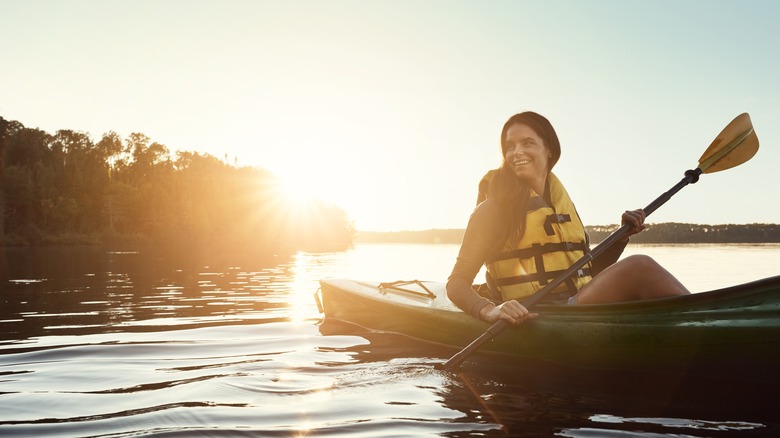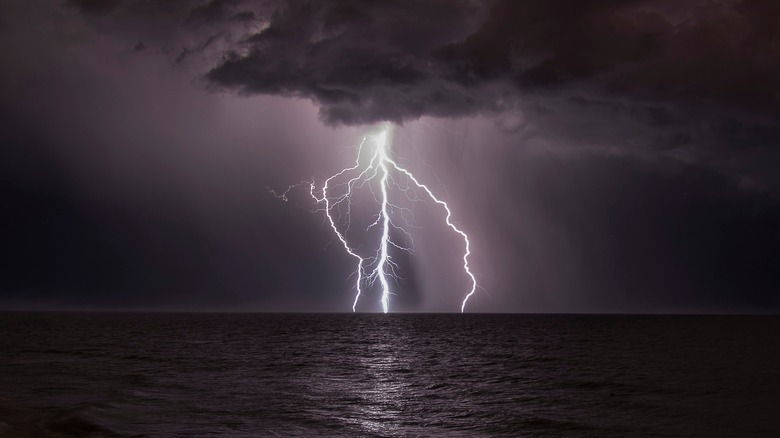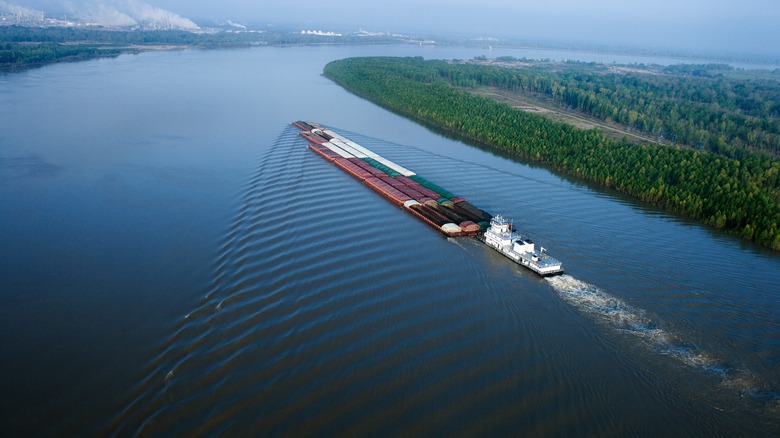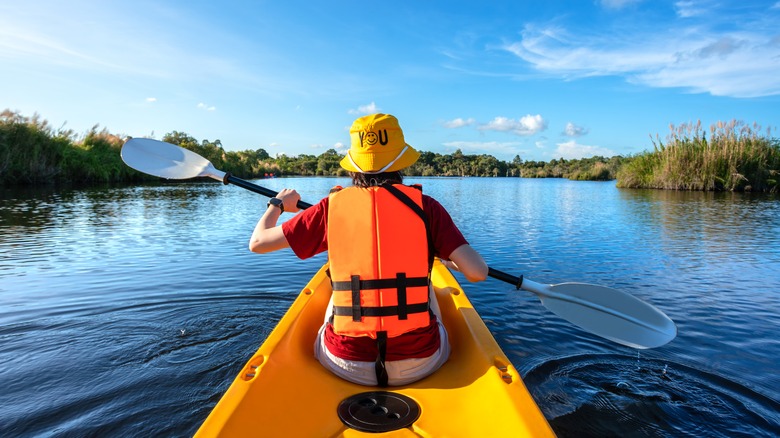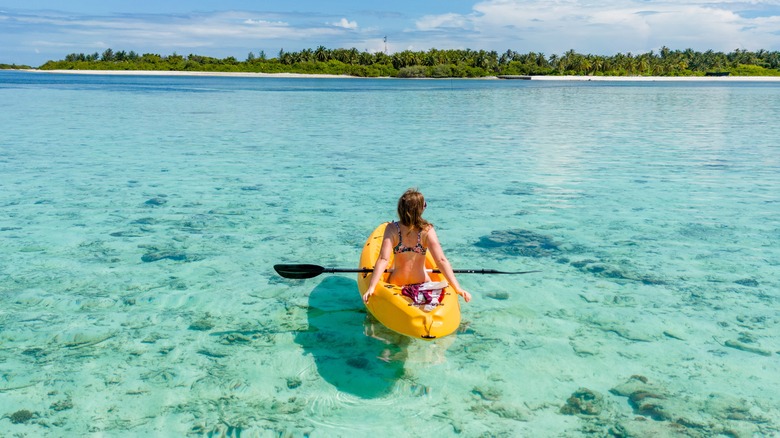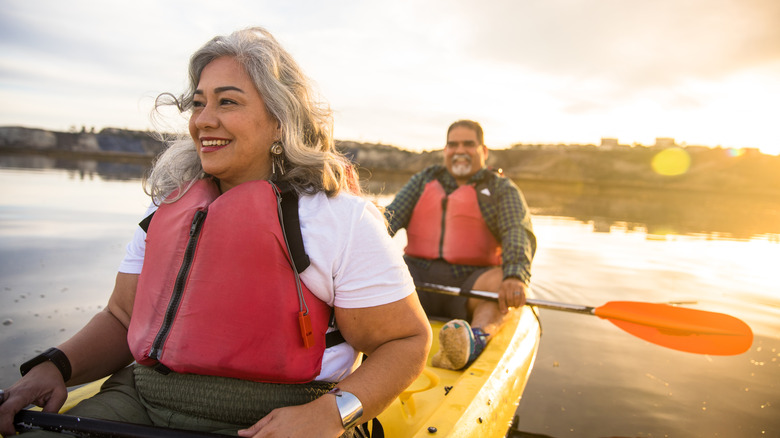The Little-Known Hidden Dangers Of Kayaking
Kayaking is a great way to get out on the water, enjoy the sunshine, and appreciate nature. It's also a hobby that anyone can do no matter the age or experience level. However, the problem with kayaking is that it is often perceived as more simple and easy than it actually is. While kayaking is relatively safe, there are still a few little-known dangers that you need to watch out for while out on the water. These dangers can be anything, from strong winds and unpredictable undercurrents to other boats and people.
Overall, the biggest risk when it comes to being in a kayak is accidentally capsizing. Capsizing, or flipping your boat, is a bad idea for many reasons. The first is that it can plunge you into cold water which can cause hypothermia when and if you can get back into your boat. Capsizing may even put you in a dangerous situation where you are separated from your boat and in the water without a proper flotation device. Problems like this can quickly go from scary to life-threatening. So, here are some of the little-known dangers to look out for when kayaking and some ideas for how to avoid them.
Sudden storms and bad weather
It is not a good idea to be out on a lake or river when there are storms, especially if there is lightning. Unfortunately, what often happens is that the skies look clear when you start and then thunderstorms pop up when you are already out on the water. The best thing you can do when you see dark storm clouds on the horizon is to start paddling as quickly as possible to get off the water and find shelter.
This is important because when out on open water, you are the highest thing around and are more likely to be struck by lightning. Besides the dangers of lightning, storms are often accompanied by strong winds and rough water. Strong winds, if coming from the wrong direction, may hold your kayak in place and make it very difficult to reach safety. Rough water can toss your boat around and even lead to capsizing in conditions that are less than ideal for getting back inside your boat.
If you are suddenly thrust into a situation where the water becomes rough and you are getting hit by large waves, always turn your boat so that you are paddling into the waves and they aren't hitting you on the side. This will make it much harder to capsize.
Big boats with big wakes
When kayaking in waterways with boats of all sizes it is necessary to be extremely careful and stick to the edges of the lake or the river. This is important because kayaks have quite a low profile and can be hard to spot from larger vessels. Because of this, it is important to exercise caution around large vessels and never assume that they can see you. Also, try to avoid being in the path of larger vessels because they move much faster than kayaks and if they come towards you, it will be hard to get out of the way in time. If you know you will be in a waterway with large motorized vessels, it's a good idea to wear bright standout colors like orange and pink to make yourself easier to spot on the water.
However, even if you avoid high-traffic lanes on larger bodies of water and stick to the edge of the lake or river, large motorboats can still cause problems with their wakes. When large boats travel through the water they displace it and cause large waves. These waves can sometimes be big enough to capsize you if they hit you from the side. To avoid this, turn your kayak and paddle directly into the waves.
Going through unexpected rapids
If you want to avoid busy boat lanes and heavy motorboat traffic, you may choose your small local river as a nice spot to put the boats in. While river kayaking is a lot of fun, you should always look at a map of the river and carefully determine whether or not there are any rapids and where they are located. Rapids, or areas of fast-moving water, can occur because of recent rain or when a river suddenly becomes narrow causing more water to be pushed through a smaller area.
The good news is that kayaking through most lower-class rapids is safe as long as you know what to do. However, most kayaks are not designed to go through rapids that are above a class II. When you hit faster-moving low-class rapids in a kayak, the safest way to get through is to keep paddling and head right down the middle of the river. For most fast-water areas, you will see a V of calm water that goes down the center. You should follow that V and keep paddling until you are completely through the fast water.
Rapids should never be underestimated and you should always wear your life jacket when kayaking through them. If your boat flips in rapids and you end up in the water, always float down rapids feet first, and don't try to catch or get back in your boat until you are in calm water.
Surprises from under and above the water
Another danger when kayaking is hitting a large rock or log that is submerged and not visible beneath the water's surface. While kayaks are not normally moving fast enough to flip when hitting something underwater, the jarring sound of crashing into a large rock or piece of wood in a resin or fiberglass boat can cause you to jump or even lean away from the source of the sound which can lead to capsizing.
To prevent this, while out on the water and especially on a river you should be "reading the water." This means you should always be looking at the water for signs of something big beneath the surface. These signs typically include an unmoving wave with smooth water behind it which signifies something large beneath the surface that is forcing the water up into a small wave as it goes around or over the object.
Just as there are dangers below the surface, you need to watch out for low-hanging branches or downed trees sitting above the water. These obstacles are often called sweepers because it is easy to misjudge whether or not you and your boat can make it under them. When you misjudge this, you will get whacked in the head with a bunch of branches which can be surprising and may cause you to flip.
Balancing the boat and avoiding flipping yourself
While kayaking it is important to make sure your weight in the boat is balanced by sitting in the center. If you are in a two-person kayak, then both people need to try to sit in the center of the boat and respond to each other's movements. If your kayaking partner leans to the right, you should lean to the left to balance the boat. You should also never try to stand up in a kayak because it raises your center of gravity and makes staying upright much more difficult.
Kayaks in general are pretty stable and are difficult to accidentally flip. However, this stability can lead to a false sense of safety that sometimes causes kayakers to take more risks. The easiest way to flip your boat is to accidentally dig your paddle too deep in the water. This happens because the strength of the water combined with throwing your weight to one side can put the boat off balance. To avoid this, always be mindful when paddling hard not to lean too much to one side. You can also make sure not to dig your paddle into the water to splash your friends because you may end up just getting soaked yourself.
